|
Books Should Be Free Loyal Books Free Public Domain Audiobooks & eBook Downloads |
|
|
Books Should Be Free Loyal Books Free Public Domain Audiobooks & eBook Downloads |
|
War Stories |
|---|
|
Book type:
Sort by:
View by:
|
By: US Office of Civil Defense | |
|---|---|
 In Time Of Emergency: A Citizen's Handbook On Nuclear Attack, Natural Disasters
In Time Of Emergency: A Citizen's Handbook On Nuclear Attack, Natural Disasters
A major emergency affecting a large number of people may occur anytime and anywhere. It may be a peacetime disaster such as a flood, tornado, fire, hurricane, blizzard or earthquake. It could be an enemy nuclear attack on the United States. In any type of general disaster, lives can be saved if people are prepared for the emergency, and know what actions to take when it occurs. This handbook, "In Time of Emergency" (1968), contains basic general information on both nuclear attack and major natural disasters... | |
By: Philip Gibbs (1877-1962) | |
|---|---|
 Now It Can Be Told
Now It Can Be Told
In this book I have written about some aspects of the war which, I believe, the world must know and remember, not only as a memorial of men's courage in tragic years, but as a warning of what will happen again--surely--if a heritage of evil and of folly is not cut out of the hearts of peoples. Here it is the reality of modern warfare not only as it appears to British soldiers, of whom I can tell, but to soldiers on all the fronts where conditions were the same... The purpose of this book is to get... | |
By: Philip Francis Nowlan (1888-1940) | |
|---|---|
 Airlords of Han
Airlords of Han
Airlords of Han is the 2nd Buck Rogers story, the sequel to Armageddon 2419 A.D.. Anthony Rogers takes the fight to free 25th Century America to the Han overlords. From the March, 1929 issue of Amazing Stories. | |
By: Frederick A. Talbot (1880-?) | |
|---|---|
 Aeroplanes and Dirigibles of War
Aeroplanes and Dirigibles of War
"Aeroplanes and Dirigibles of War" is an interesting read of the beginnings of air warfare in World War I. Anyone interested in early aviation and armament will find this a fascinating work. By William Tomcho. | |
By: William Allison Sweeney | |
|---|---|
 History of the American Negro
History of the American Negro
History Of The American Negro In The Great World WarHis Splendid Record In The Battle Zones Of Europe By W. Allison Sweeney Contributing Editor Of The Chicago Defender. CHAPTER I. SPIRITUAL EMANCIPATION OF NATIONS. The march of civilization is attended by strange influences. Providence which directs the advancement of mankind, moves in such mysterious ways that none can sense its design or reason out its import. Frequently the forces of evil are turned to account in defeating their own objects. Great tragedies, cruel wars, cataclysms of woe, have acted as enlightening and refining agents... | |
By: Alexander Aaronsohn (1888-1948) | |
|---|---|
 With the Turks in Palestine
With the Turks in Palestine
While Belgium is bleeding and hoping, while Poland suffers and dreams of liberation, while Serbia is waiting for redemption, there is a little country the soul of which is torn to pieces—a little country that is so remote, so remote that her ardent sighs cannot be heard.It is the country of perpetual sacrifice, the country that saw Abraham build the altar upon which he was ready to immolate his only son, the country that Moses saw from a distance, stretching in beauty and loveliness,—a land of promise never to be attained,—the country that gave the world its symbols of soul and spirit... | |
By: James Brendan Connolly (1868-1957) | |
|---|---|
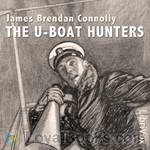 The U-Boat Hunters
The U-Boat Hunters
The author takes the listener on a tour of various ships used in WW1. He discusses the boats and the seamen who occupy them and their encounters with the German U-boats. It is a collection of short stories, each one complete, about them all. The author was also an Olympic athlete; winning a bronze, silver and gold medal in the Athens Olympics of 1896 and a silver in the Paris games of 1900. | |
By: Alice Turner Curtis (1863-??) | |
|---|---|
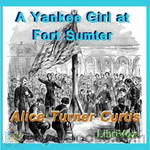 A Yankee Girl at Fort Sumter
A Yankee Girl at Fort Sumter
Sylvia Fulton is a ten-years-old girl from Boston who stayed in Charleston, South Carolina, before the opening of the civil war. She loves her new home, and her dear friends. However, political tensions are rising, and things start to change. Through these changes, Silvia gets to know the world better: from Estrella, her maid, she starts to understand what it is to be a slave, from her unjust teacher she learns that not all beautiful people are perfect, and from the messages she carries to Fort Sumter she learns what is the meaning of danger. However, this is a lovely book, written mostly for children. | |
By: Nellie McClung (1873-1951) | |
|---|---|
 Three Times and Out
Three Times and Out
The true story of M. C. Simmons, a Canadian soldier captured by the German Army during the early days of World War I. We read of his sixteen months of imprisonment, his encounters with other captured troops of the other Allied armies and his observations of the nature of his captors and their countrymen. Most compellingly we read of his escape from POW camp, his recapture and punishment, and then the capture and punishment following his second escape attempt, climaxing in his third escape attempt and daring travel through enemy territory against all odds... | |
By: Lady Sarah Wilson (1865-1929) | |
|---|---|
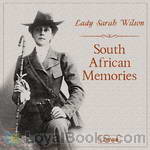 South African Memories
South African Memories
Lady Sarah Isabella Augusta Wilson was the aunt of Winston Spencer Churchill. In 1899 she became the first woman war correspondent when she was recruited to cover the Siege of Mafeking for the Daily Mail during the Boer War. She moved to Mafeking with her husband at the start of the war, where he was aide-de-camp to Colonel Robert Baden-Powell. Baden-Powell asked her to leave Mafeking for her own safety after the Boers threatened to storm the British garrison. This she duly did, and set off on a... | |
By: Mary Seacole (1805-1881) | |
|---|---|
 Wonderful Adventures of Mrs. Seacole in Many Lands
Wonderful Adventures of Mrs. Seacole in Many Lands
I should have thought that no preface would have been required to introduce Mrs. Seacole to the British public, or to recommend a book which must, from the circumstances in which the subject of it was placed, be unique in literature. If singleness of heart, true charity, and Christian works; if trials and sufferings, dangers and perils, encountered boldly by a helpless woman on her errand of mercy in the camp and in the battle-field, can excite sympathy or move curiosity, Mary Seacole will have many friends and many readers... | |
By: Francis Andrew March (1863-1926) | |
|---|---|
 History of the World War
History of the World War
This is a popular narrative history of the world's greatest war. Written frankly from the viewpoint of the United States and the Allies, it visualizes the bloodiest and most destructive conflict of all the ages from its remote causes to its glorious conclusion and beneficent results.Two ideals have been before us in the preparation of this necessary work. These are simplicity and thoroughness. It is of no avail to describe the greatest of human events if the description is so confused that the reader loses interest... | |
By: Lily Dougall (1858-1923) | |
|---|---|
 Mermaid
Mermaid
"'What a fool I was not to go where she beckoned!' mused Caius. 'Where? Anywhere into the heart of the ocean, out of this dull, sordid life into the land of dreams.' For it must all have been a dream—a sweet, fantastic dream, imposed upon his senses by some influence, outward or inward; but it seemed to him that at the hour when he seemed to see the maid it might have been given him to enter the world of dreams, and go on in some existence which was a truer reality than the one in which he now was... | |
By: Sir Edward Shepherd Creasy (1812-1878) | |
|---|---|
 Fifteen Decisive Battles of the World
Fifteen Decisive Battles of the World
This work is Edward Creasy's best known fundamental work of history. It describes in detail 15 battles of world history, beginning with the Battle of Marathon of 490 BC and ending with the Battle of Waterloo of 1815. Each chapter is illustrated with rich historical detail and a timeline of events. | |
By: George Bethune English (1787-1828) | |
|---|---|
 A Narrative of the Expedition to Dongola and Sennaar
A Narrative of the Expedition to Dongola and Sennaar
As a second lieutenant in the United States Marine Corps during the War of 1812 assigned to Marine Corps headquarters, English sailed to the Mediterranean, and was among the first citizens of the United States known to have visited Egypt. Shortly after arriving in Egypt he resigned his commission, converted to Islam and joined Isma'il Pasha in an expedition up the Nile River against Sennar in 1820, winning distinction as an officer of artillery. He published his Narrative of the Expedition to Dongola and Sennaar (London 1822) regarding his exploits. (Introduction adapted by obform from Wikipedia) | |
By: Robert Sidney Bowen (1900-1977) | |
|---|---|
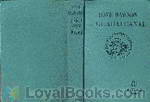 Dave Dawson on Guadalcanal
Dave Dawson on Guadalcanal
One of a series of youth-oriented adventure books set in contemporary WWII era, featuring fictional American flying ace, Dave Dawson. | |
By: Frances Swain | |
|---|---|
 Food Guide for War Service at Home
Food Guide for War Service at Home
"The long war has brought hunger to Europe; some of her peoples stand constantly face to face with starvation. To meet all this great food need in Europe—and meeting it is an imperative military necessity—we must be very careful and economical in our food use here at home. We must eat less; we must waste nothing; we must equalize the distribution of what food we may retain for ourselves; we must prevent extortion and profiteering which make prices so high that the poor cannot buy the food they actually need; and we must try to produce more food... | |
By: Boyd Cable (1878-1943) | |
|---|---|
 Between the Lines
Between the Lines
This book, all of which has been written at the Front within sound of the German guns and for the most part within shell and rifle range, is an attempt to tell something of the manner of struggle that has gone on for months between the lines along the Western Front, and more especially of what lies behind and goes to the making of those curt and vague terms in the war communiqués. I think that our people at Home will be glad to know more, and ought to know more, of what these bald phrases may actually signify, when, in the other sense, we read 'between the lines.' | |
By: Archibald Forbes (1838-1900) | |
|---|---|
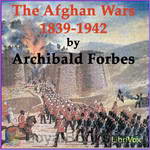 The Afghan Wars 1839-42 and 1878-80, Part 1
The Afghan Wars 1839-42 and 1878-80, Part 1
The First Anglo–Afghan War was fought between British India and Afghanistan from 1839 to 1842. It was one of the first major conflicts during the Great Game, the 19th century competition for power and influence in Central Asia between the United Kingdom and Russia, and also marked one of the worst setbacks inflicted on British power in the region after the consolidation of British Raj by the East India Company. | |
By: Julius Klausner, jr | |
|---|---|
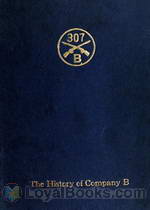 History of Company B 307th Infantry
History of Company B 307th Infantry
The history of Company B, 307 Infantry's participation in The First World War. A part of the 77th Division it trained at Camp Upton, New York before leaving for France. | |
By: Henry Ossian Flipper (1856-1940) | |
|---|---|
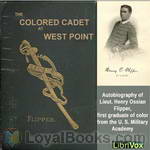 The Colored Cadet at West Point
The Colored Cadet at West Point
Henry Ossian Flipper--born into slavery in Thomasville, Georgia on March 21, 1856--did not learn to read and write until just before the end of the Civil War. Once the war had ended, Flipper attended several schools showing a great aptitude for knowledge. During his freshman year at Atlanta University he applied for admittance to the United States National Military Academy at West Point. He was appointed to the academy in 1873 along with a fellow African American, John W. Williams. Cadet Williams was later dismissed for academic deficiencies. | |
By: Richard Haigh (1895-) | |
|---|---|
 Life in a Tank
Life in a Tank
Richard Haigh was an Infantry lieutenant in the 2nd Royal Berkshire Infantry Regiment serving in the Somme area in 1916. Shortly after Tanks were first used in battle in September of 1916 the British Army asked for volunteers, Lieutenant Haigh signed up and was accepted in December of 1916. He describes the training and actions he participated in until the war ended in 1918. He was awarded MC in 1916 as Lt. (acting Capt.) Richard Haigh, Royal Berkshire Regiment. He was commissioned from the RMC (Sandhurst) to the Berkshires 16th Feb 1915; on resigning his commission in 1919, he joined the General Reserve of Officers. | |
By: Ernest Protheroe | |
|---|---|
 Noble Woman The Life-Story of Edith Cavell
Noble Woman The Life-Story of Edith Cavell
Edith L. Cavell (1865–1915) was a British nurse who attended to soldiers of both sides during World War I, and helped some 200 Allied soldiers escape from German-occupied Belgium, for which she was arrested, court-martialed, found guilty of treason and sentenced to death. Attempts to mount an appeal failed, and she was summarily executed within hours of the sentence by a German firing squad. Publication of the news prompted spontaneous grief and worldwide condemnation. Many memorials were created around the world, including a statue adjacent to Trafalgar Square in London... | |
By: Louise Mack (1870-1935) | |
|---|---|
 Woman's Experiences in the Great War
Woman's Experiences in the Great War
An eye-witness account of the fall of Antwerp to the Germans in the opening months of World War I, Mack’s story has passages of extraordinary vividness and immediacy. Flawed by the most treacly sentiment in some places and the most ferocious anti-German invective in others, her account endures as an uncommonly forthright, passionate testimony to those tragic events and the ordinary people who were the true heroes of them. As a forty-something, coquettish war correspondent wrapped in sable furs... | |
By: Evans, A. J. (1889-1960) | |
|---|---|
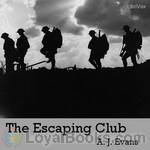 The Escaping Club
The Escaping Club
Described by some as one of the greatest escape books published. The Escaping Club recounts Evans' escape to Switzerland from a supposedly "escape-proof" German prison camp during World War I. After repatriation and rejoining the war, Evans again finds himself captured, this time first by Arabs and then by Turks. He again manages to escape. A detailed look at the trials faced by Allied POWs during World War I. | |
By: Austin Bishop | |
|---|---|
 Tom of the Raiders
Tom of the Raiders
Young Adult historical fiction of a young man joining the Union Army and taking part in the Great Locomotive Chase. | |
By: Josephine Butler (1828-1906) | |
|---|---|
 Native Races and the War
Native Races and the War
Josephine Elizabeth Butler was a Victorian era British feminist who was strongly committed to liberal reforms. As a result of her efforts, international organisations including the International Abolitionist Federation were set up to campaign against state regulation of prostitution and the trafficking in women and children. This book reflects her abhorrence of slavery in all its forms and is particularly pertinent in our world of today. | |
By: Unknown | |
|---|---|
 A School History of the Great War
A School History of the Great War
A brief history of The Great War (World War I) designed for students in grades seven and eight. Special emphasis on European history leading up to the war, reasons and events leading to America’s eventual entering the war, and possible ramifications of the war for future generations. | |
By: Calista McCabe Courtenay | |
|---|---|
 George Washington
George Washington
In this biography for young people, Calista McCabe Courtenay takes the reader from George Washington the surveyor to his early military career, first as a colonel in the Virgina militia and then as a member of General Braddock'a staff during the French and Indian War. He later commanded the Virginia forces before joining the First Continental Congress. Much of the book is devoted to his campaigns during the American Revolution. At the end, we see him as President for two terms. | |
By: Theodore Roosevelt (1858-1919) | |
|---|---|
 The Naval War of 1812
The Naval War of 1812
Somewhat detailed history of naval engagements between the United States and England during the War of 1812, from a decidely American perspective. Completed by the author as a young man at age 24. After 120 years, it remains a standard study of the war. | |
By: John Buchan (1875-1940) | |
|---|---|
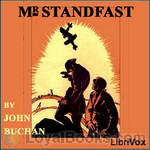 Mr. Standfast
Mr. Standfast
This is the third of Buchan's Richard Hannay novels, following The Thirty-nine Steps and Greenmantle. Set, like Greenmantle, durinig World War I, it deals Brigadier-General Hannay's recall from the Western Front, to engage in espionage, and forced (much to his chagrin) to pose as a pacifist. He becomes a South African conscientious objector, using the name Cornelius Brand. Under the orders of his spymaster, Sir Walter Bullivant, he travels in the book through England to Scotland, back to the Western Front, and ultimately, for the book's denouement, into the Alps... | |
By: Ambrose Bierce (1842-1913) | |
|---|---|
|
At the outset of the American Civil War, [the writer Ambrose] Bierce enlisted in the Union Army's 9th Indiana Infantry Regiment....In February 1862 he was commissioned First Lieutenant, and served on the staff of General William Babcock Hazen as a topographical engineer, making maps of likely battlefields. Bierce fought at the Battle of Shiloh (April 1862), a terrifying experience that became a source for several later short stories and the memoir, "What I Saw of Shiloh". In June 1864, he sustained a serious head wound at the Battle of Kennesaw Mountain, and spent the rest of the summer on furlough, returning to active duty in September. He was discharged from the army in January 1865. | |